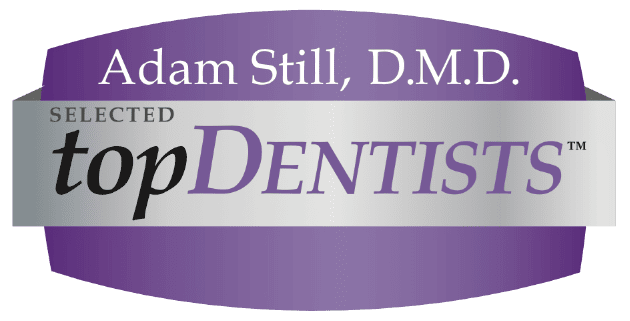 You have probably already made your New Year’s resolution and by now, have perhaps slid off the path of good intentions. But it’s not too late! For this week’s Smile Sarasota Blog, we chose to share someone else’s blog – Fred Joyal’s, because it was so good and…so INSPIRING! Read more here…
You have probably already made your New Year’s resolution and by now, have perhaps slid off the path of good intentions. But it’s not too late! For this week’s Smile Sarasota Blog, we chose to share someone else’s blog – Fred Joyal’s, because it was so good and…so INSPIRING! Read more here…
We all have someone who inspires us. If you’re lucky, you have several. And hopefully, some of them are people you actually interact with on a regular basis, and aren’t just famous people or historical figures. But it can also be little things, brief encounters, that inspire us. I recently was picking up a rental car, and the Hertz clerk had such a genuinely cheerful attitude that he inspired me to brighten my own outlook. If we’re paying attention, inspiration can come from many places.
But what this blog is about is who you inspire. We all have this ability. We all interact with family, co-workers, customers (patients) and various strangers throughout our day. Inspiration is a gift we can give to others. And it doesn’t have to be something life-changing. You’re not going to barrel through your day handing out epiphanies left and right. But you can spark something. You can uplift someone. You can set a good example, or do the unexpected.
And what really inspires people? Our actions. Sometimes it’s our words, or maybe a FaceBook post. But mostly, it’s our actions.
An act of kindness. A moment of patience or forbearance. Or generosity. You can inspire someone when you make someone laugh when they’re down, and show them the positives that are all around them. You can demonstrate a better attitude (like my friend at Hertz).
A simple act of courtesy can inspire people, often without you even knowing them or realizing the impact you’ve had.
The opportunities to inspire are all around us. Grab a few.
I do this deliberately. I try to inspire my employees. My friends. The people I lecture to. This is not some ego trip I’m on. I don’t see myself as hugely inspiring, but I do acknowledge my ability to have some impact on people. And so I make the effort. Not to force-feed my viewpoint, but to show someone a different path. It’s still up to them to take it. Inspiration is not about making anyone do anything. It’s an invitation.
And I don’t just see this as a nice thing to do. I see it as important to do, for you as well as others. For your own quality of life, your deeper happiness and satisfaction.
So I’m going to invite you to do something unusual. Since it’s the time of year for resolutions, I’m going to suggest a different approach, which is this: take a few minutes, sit down and write your own eulogy.
Yes, actually write your eulogy. I know that sounds a bit morbid. But I’m pretty sure you’re going to die someday, so relax and go with it. This is a chance for you to dive a little deeper into this concept of inspiring others. The method to writing this is quite simple. All you have to do is envision what you will be remembered for.
This is not for anyone else to read. This is for you, written as if you were reading it at your own funeral service. (Ideally, many, many years from now!)
This is your chance to be honest, even brutally so, with yourself. What do you think your life will have meant to people? What would they say? How do you think people would describe you? Critique you? What would they miss about you? Would they miss you?
Will it be that you always had a fancy car and a big house, or was it that you were generous to a fault?
Were you adventurous or timid? Were you fair-minded or close-minded?
Did you choose love when it was difficult to do so, or did you fall into bias, prejudice, judgment and superiority?
Were you kind to animals but mean to people?
Exceptionally well-known, or an exceptional parent, or an exceptional complainer?
Did you have more friends than you could count, or more money than you could count?
Did you win, or help others to win? Did you crush the competition, or toast together with your competitors for a game well-played, whether you won or lost?
Did you inspire people to be better, to love more, to share more, to be honest and trustworthy?
Did you win arguments, or affection? (Side note: there is no such thing as winning an argument. I’ve tried. It’s a delusion.)
Did you avenge every wrong, resent every slight, hold grudges endlessly, or opt for forgiveness?
Did your words of encouragement outweigh your criticisms?
Did you laugh enough? Did you pray enough?
Did you make a fortune? Or make a difference? (Not that you couldn’t do both.)
As you get toward the end of your eulogy, write what you would most want to be remembered for. Remember, this is for you. Not to show other people. Don’t worry about the grammar. You are the only audience.
Once it’s done, seal it and read it next January 1st. See what’s changed. Maybe you inspired yourself.
Posted on January 6, 2016 by Fred Joyal
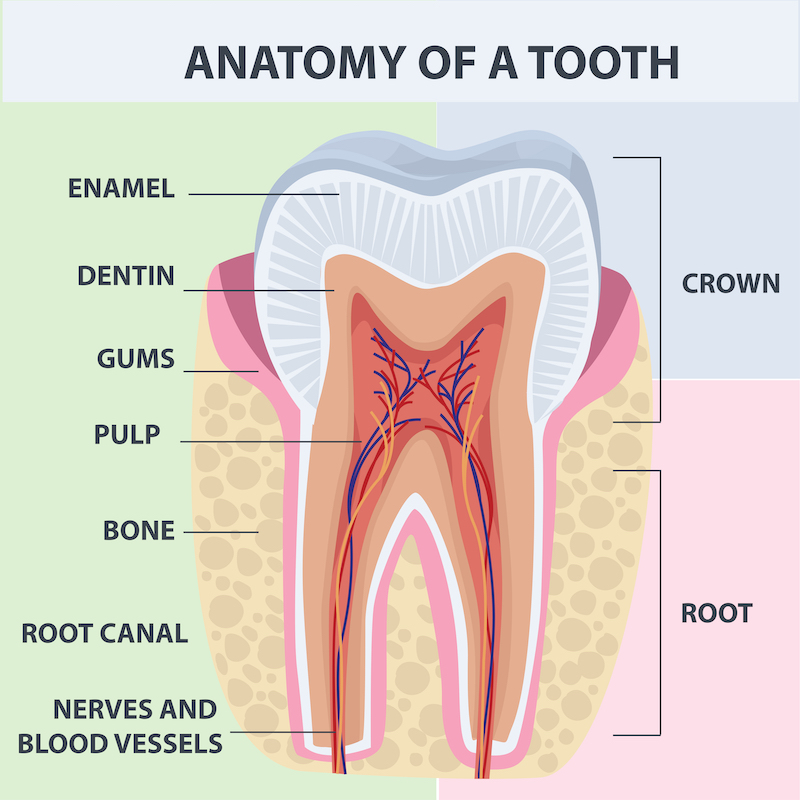

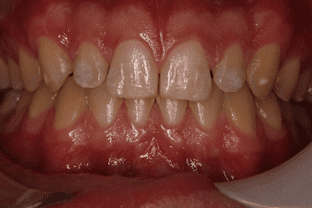
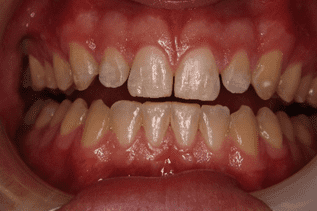
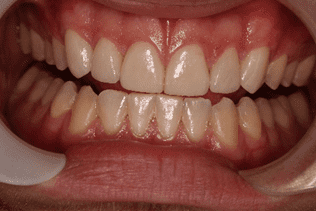
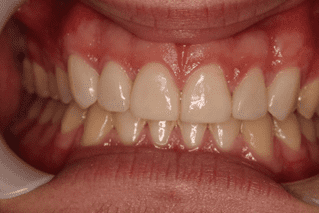
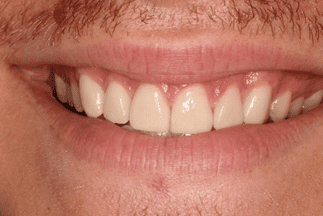

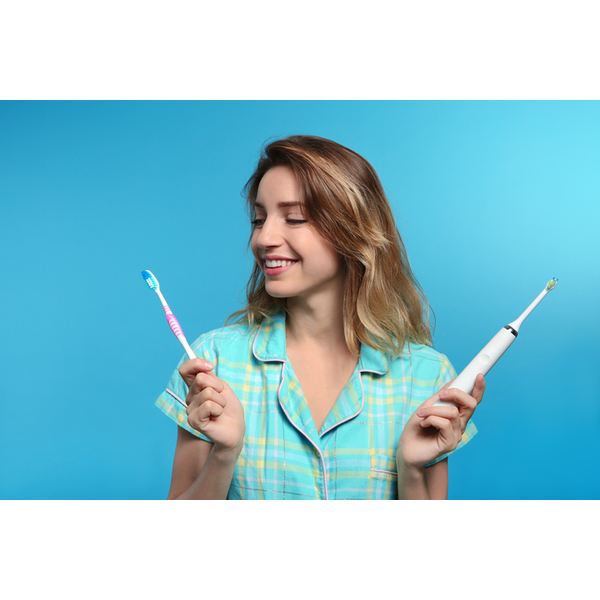 Brushing your teeth is the foundation for good oral care and prevention. Dental professionals agree that brushing your teeth for two minutes, twice a day is the most effective step you can take to get rid of bacteria that causes plaque. Plaque is a sticky film that adheres to your teeth. When plaque builds up and becomes hard, it turns into tartar which causes tooth decay as well as gum disease. However, with the invention of the electric powered toothbrush, many are having a hard time deciding what is best for the overall health of their teeth.
Brushing your teeth is the foundation for good oral care and prevention. Dental professionals agree that brushing your teeth for two minutes, twice a day is the most effective step you can take to get rid of bacteria that causes plaque. Plaque is a sticky film that adheres to your teeth. When plaque builds up and becomes hard, it turns into tartar which causes tooth decay as well as gum disease. However, with the invention of the electric powered toothbrush, many are having a hard time deciding what is best for the overall health of their teeth.

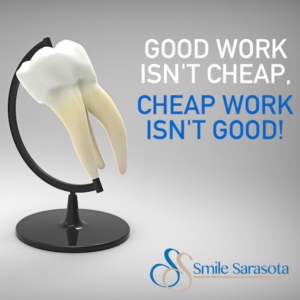 It’s no secret that dental care can be expensive and this results in many patients avoiding dental visits altogether. There is, however, a trend where individuals choose to leave their home country to travel abroad to have work done on their teeth for a cheaper cost. Certainly, no country has a monopoly on good medical care however, it’s important to realize that there are pros and cons to this kind of traveling. So what are the concerns?
It’s no secret that dental care can be expensive and this results in many patients avoiding dental visits altogether. There is, however, a trend where individuals choose to leave their home country to travel abroad to have work done on their teeth for a cheaper cost. Certainly, no country has a monopoly on good medical care however, it’s important to realize that there are pros and cons to this kind of traveling. So what are the concerns? Winter is just around the corner…even in Sarasota, Florida – the Sunshine State! Time to break out the sweaters, (maybe!) and set the clocks back for Daylight Saving Time ending on Sunday, November 5th. While the days get shorter, let’s prepare for the unwanted side effects to our health. Luckily, we found great ways to combat them:
Winter is just around the corner…even in Sarasota, Florida – the Sunshine State! Time to break out the sweaters, (maybe!) and set the clocks back for Daylight Saving Time ending on Sunday, November 5th. While the days get shorter, let’s prepare for the unwanted side effects to our health. Luckily, we found great ways to combat them: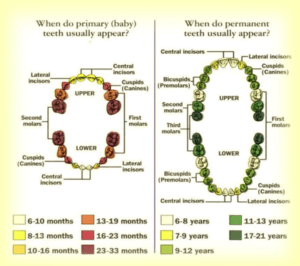 In order to properly care for your teeth, it’s essential to understand how your teeth grow, what problems they can develop, and what role they play as a key part of your body. This is Part 1 of a 3 part series…all about teeth!
In order to properly care for your teeth, it’s essential to understand how your teeth grow, what problems they can develop, and what role they play as a key part of your body. This is Part 1 of a 3 part series…all about teeth!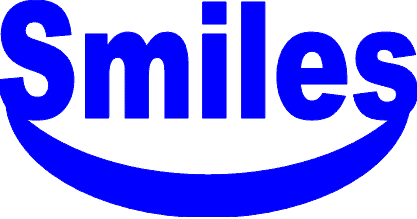 There are hundreds of languages in the world, but a SMILE speaks them all!
There are hundreds of languages in the world, but a SMILE speaks them all!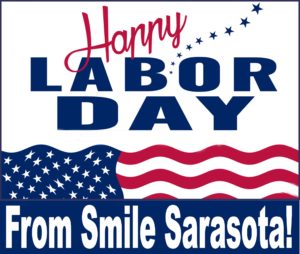 The first Monday in September is celebrated nationally as Labor Day. So how did we get the holiday and why is no one quite sure who created it?
The first Monday in September is celebrated nationally as Labor Day. So how did we get the holiday and why is no one quite sure who created it?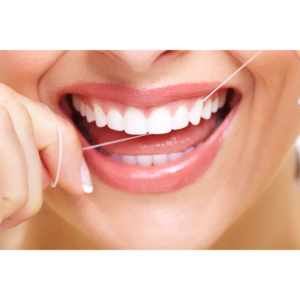 Your Health is Hanging by a Thread – The Story of Dental Floss
Your Health is Hanging by a Thread – The Story of Dental Floss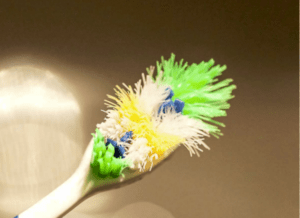 As you reach for your toothbrush each morning, you may not realize what’s hanging out on its bristles. Viruses and bacteria from an infected person’s mouth can live for weeks on a toothbrush surface, and continue to cause illness. So when is the last time you gave your toothbrush any serious thought? Sure, you use it every day (hopefully more than once), and you know that with a dollop of toothpaste it waxes up your pearly whites nicely, not to mention preventing bacteria, plaque, and inflammation.
As you reach for your toothbrush each morning, you may not realize what’s hanging out on its bristles. Viruses and bacteria from an infected person’s mouth can live for weeks on a toothbrush surface, and continue to cause illness. So when is the last time you gave your toothbrush any serious thought? Sure, you use it every day (hopefully more than once), and you know that with a dollop of toothpaste it waxes up your pearly whites nicely, not to mention preventing bacteria, plaque, and inflammation.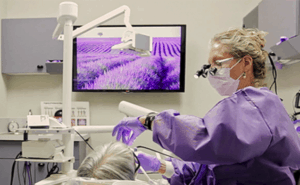
 As we celebrate the beginning of a new year, many of us will use this opportunity to make resolutions to lose weight, stop smoking and spend more time with family. Some people even resolve to take care of the smile they’ve been hiding! At Smile Sarasota, we can help you fulfill your resolution to get the smile of your dreams so you can stop hiding…and start smiling!
As we celebrate the beginning of a new year, many of us will use this opportunity to make resolutions to lose weight, stop smoking and spend more time with family. Some people even resolve to take care of the smile they’ve been hiding! At Smile Sarasota, we can help you fulfill your resolution to get the smile of your dreams so you can stop hiding…and start smiling!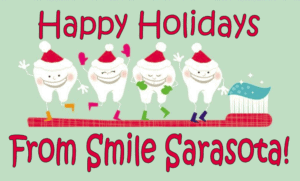 At this crazy time of year, in the midst of the hustle and business of running from store to another line in another store and as you check off things on your list, perhaps a dental blog about whitening your teeth, or not eating too many sweets over the holidays might be expected. But, at Smile Sarasota, we prefer wishing “Happy Holidays” to our family of patients and team members, complete with smiles, and hugs. Over the last few weeks, and we have been drawn to sending a message of hope, happiness and gratitude.
At this crazy time of year, in the midst of the hustle and business of running from store to another line in another store and as you check off things on your list, perhaps a dental blog about whitening your teeth, or not eating too many sweets over the holidays might be expected. But, at Smile Sarasota, we prefer wishing “Happy Holidays” to our family of patients and team members, complete with smiles, and hugs. Over the last few weeks, and we have been drawn to sending a message of hope, happiness and gratitude.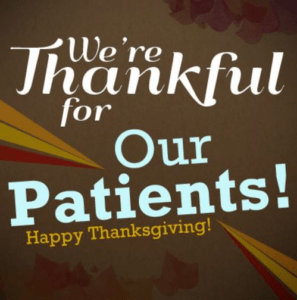 Thanksgiving is a wonderful time of year. It is a time that brings families together, gives us an opportunity to appreciate and be thankful for all that has happened throughout the year. As Thanksgiving week approaches, we are reminded of how much we, in the dental profession, have to be thankful for.
Thanksgiving is a wonderful time of year. It is a time that brings families together, gives us an opportunity to appreciate and be thankful for all that has happened throughout the year. As Thanksgiving week approaches, we are reminded of how much we, in the dental profession, have to be thankful for.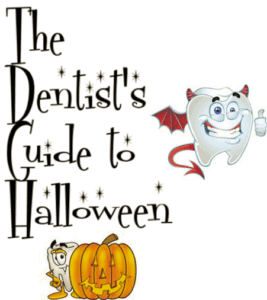 eating all that Halloween candy…and for that matter, any sweets.
eating all that Halloween candy…and for that matter, any sweets.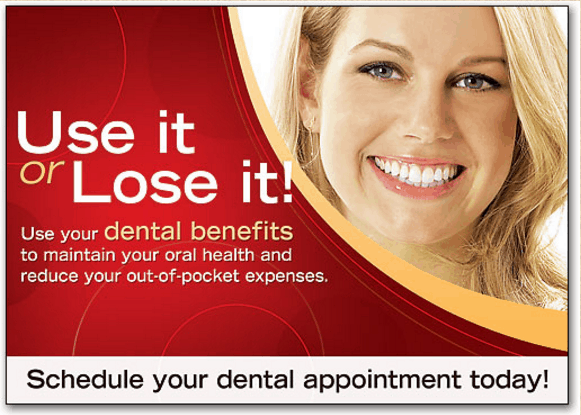 At Smile Sarasota we take enormous pride in delivering expert dental care which includes keeping patients apprised of their pending dental services.
At Smile Sarasota we take enormous pride in delivering expert dental care which includes keeping patients apprised of their pending dental services.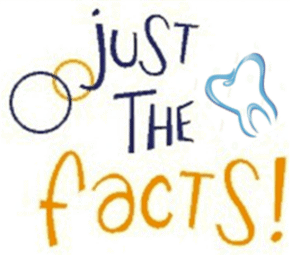
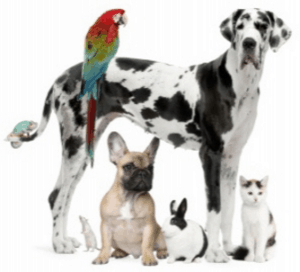 Most of here at Smile Sarasota have pets and those for who don’t, it’s only temporary until a new ‘furbaby’ is part of the family. We are starting a little contest today – we are posting photos of our staff’s furbabies on
Most of here at Smile Sarasota have pets and those for who don’t, it’s only temporary until a new ‘furbaby’ is part of the family. We are starting a little contest today – we are posting photos of our staff’s furbabies on  At Smile Sarasota, we of course talk a lot about teeth…usually HUMAN teeth. But there’s a whole world of other teeth out there!
At Smile Sarasota, we of course talk a lot about teeth…usually HUMAN teeth. But there’s a whole world of other teeth out there!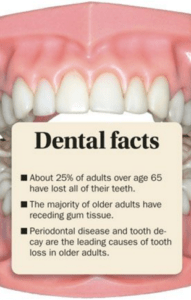
 For nearly 150 years, Americans have gathered in late spring to honor the sacrifice of those who have given their lives in service to their country. What began with dozens of informal commemorations of those killed in the Civil War has grown to become one of the nation’s most solemn and hallowed holidays. From its earliest incarnation as “Decoration Day” to its modern-day observances, check out some surprising facts about the history of Memorial Day.
For nearly 150 years, Americans have gathered in late spring to honor the sacrifice of those who have given their lives in service to their country. What began with dozens of informal commemorations of those killed in the Civil War has grown to become one of the nation’s most solemn and hallowed holidays. From its earliest incarnation as “Decoration Day” to its modern-day observances, check out some surprising facts about the history of Memorial Day. Snakes and fish do it. Cats and dogs do it. Even human babies do it inside the womb. And maybe after seeing the picture of these adorable puppies, you’re doing it now: YAWNING.
Snakes and fish do it. Cats and dogs do it. Even human babies do it inside the womb. And maybe after seeing the picture of these adorable puppies, you’re doing it now: YAWNING. You have probably already made your New Year’s resolution and by now, have perhaps slid off the path of good intentions. But it’s not too late! For this week’s Smile Sarasota Blog, we chose to share someone else’s blog – Fred Joyal’s, because it was so good and…so INSPIRING! Read more here…
You have probably already made your New Year’s resolution and by now, have perhaps slid off the path of good intentions. But it’s not too late! For this week’s Smile Sarasota Blog, we chose to share someone else’s blog – Fred Joyal’s, because it was so good and…so INSPIRING! Read more here… There are five basic tastes that can be perceived by the human tongue. These are bitterness, sourness, saltiness, sweetness and savoriness. Bitter is the most sensitive among these tastes and is detected by the taste buds at the back of tongue and in the throat. Sour on the other hand is indicative of acidity and helps in its perception. The taste buds along the side of the tongue perceive sourness. Saltiness is also recognized by these buds. Check out the video linked below…apparently, this dog’s entire tongue is wary of the sourness of lemons!
There are five basic tastes that can be perceived by the human tongue. These are bitterness, sourness, saltiness, sweetness and savoriness. Bitter is the most sensitive among these tastes and is detected by the taste buds at the back of tongue and in the throat. Sour on the other hand is indicative of acidity and helps in its perception. The taste buds along the side of the tongue perceive sourness. Saltiness is also recognized by these buds. Check out the video linked below…apparently, this dog’s entire tongue is wary of the sourness of lemons! 5 Reasons to have a Really Good Belly Laugh!
5 Reasons to have a Really Good Belly Laugh! This coming week, just about everyone in the United States will celebrate the best holiday of the year: Thanksgiving. At its best, this is a holiday about gratitude, about family and about possibility. It brings people together to not only celebrate the end of the harvest, but to look one in another in the eye and share something magical.
This coming week, just about everyone in the United States will celebrate the best holiday of the year: Thanksgiving. At its best, this is a holiday about gratitude, about family and about possibility. It brings people together to not only celebrate the end of the harvest, but to look one in another in the eye and share something magical.
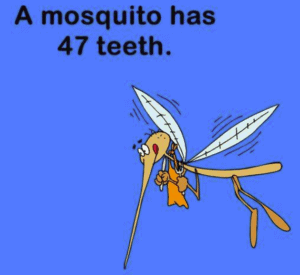 TOP 10 MOSQUITO FUN FACTS…we’re sure you’ve been hankering for this information!
TOP 10 MOSQUITO FUN FACTS…we’re sure you’ve been hankering for this information!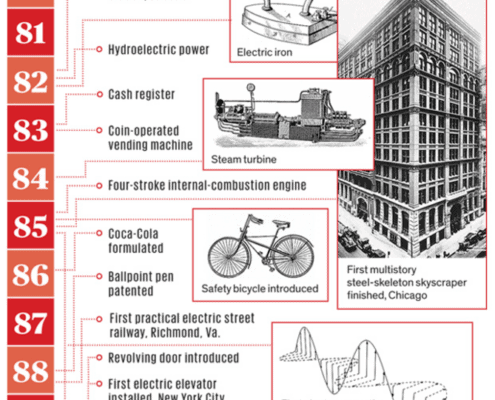 Article by By Vaclav Smil
Article by By Vaclav Smil
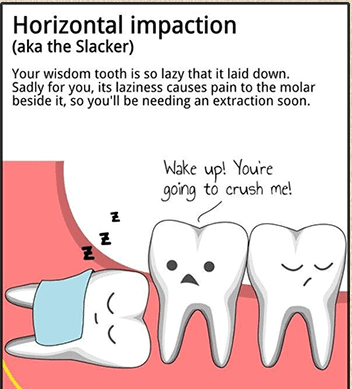 So…how did wisdom teeth become known as such? It goes back to the 17thCentury and at that time, they were called “teeth of wisdom. Usually these four molars are the last teeth to develop and erupt much later that your other teeth, normally between age 17 and 25. Since they appear so late this was referred to as the ‘age of wisdom’. The correct terminology wisdom teeth is ‘third molars’. You may not know that they serve little purpose now.
So…how did wisdom teeth become known as such? It goes back to the 17thCentury and at that time, they were called “teeth of wisdom. Usually these four molars are the last teeth to develop and erupt much later that your other teeth, normally between age 17 and 25. Since they appear so late this was referred to as the ‘age of wisdom’. The correct terminology wisdom teeth is ‘third molars’. You may not know that they serve little purpose now.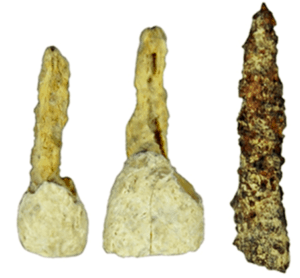 The most notable implant discovery came in 1931, when an archeologist in Honduras found the mandible of a Mayan woman thought to be in her twenties. The mandible contained three tooth-shaped seashells inserted into the sockets that once held teeth. At first, scientists believed the shells were inserted post-mortem, but in 1970, a curious dental academic discovered that bone had grown around the seashells, meaning they served as tooth replacements while the woman was alive.
The most notable implant discovery came in 1931, when an archeologist in Honduras found the mandible of a Mayan woman thought to be in her twenties. The mandible contained three tooth-shaped seashells inserted into the sockets that once held teeth. At first, scientists believed the shells were inserted post-mortem, but in 1970, a curious dental academic discovered that bone had grown around the seashells, meaning they served as tooth replacements while the woman was alive. Lots of people have asked us why some dentists have a “DDS”, after their name and some may be listed as “DMD”. Dr. Still is a DMD. The DDS (Doctor of Dental Surgery) and DMD (Doctor of Medicine in Dentistry or Doctor of Dental Medicine) are the same degrees. Dentists who have a DMD or DDS have the same education. It’s up to the universities to determine what degree is awarded. Both degrees use the same curriculum requirements set by the American Dental Association.
Lots of people have asked us why some dentists have a “DDS”, after their name and some may be listed as “DMD”. Dr. Still is a DMD. The DDS (Doctor of Dental Surgery) and DMD (Doctor of Medicine in Dentistry or Doctor of Dental Medicine) are the same degrees. Dentists who have a DMD or DDS have the same education. It’s up to the universities to determine what degree is awarded. Both degrees use the same curriculum requirements set by the American Dental Association.

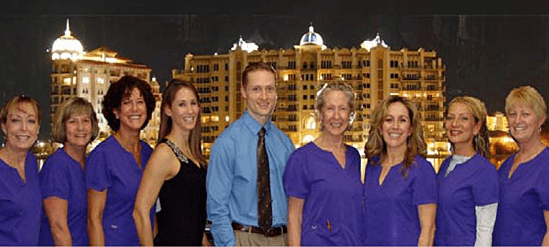
 for this holiday.
for this holiday.